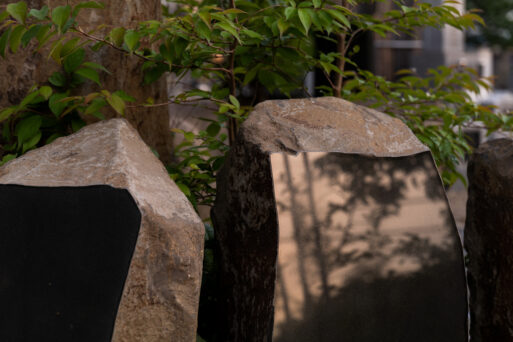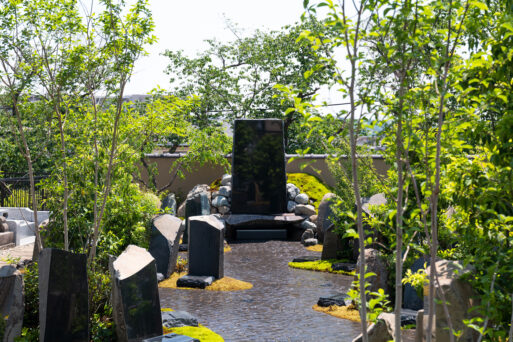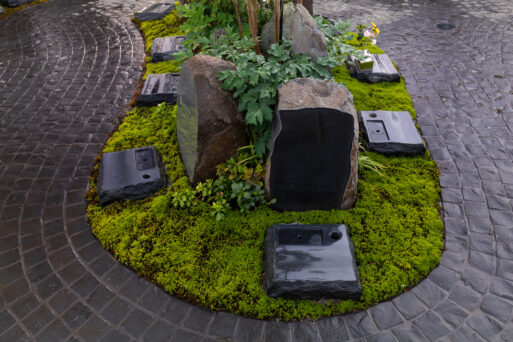
Credit: Masao Nishikawa
Nestled in Fuchu City, Japan, the Kezouin Fuchu-shi Cemetery offers a serene landscape amidst its undulating black stone walking paths and islands of lush green moss. Crafted by Love Architecture, this stunning dry landscape garden not only celebrates the beauty of nature but also reflects the evolving dynamics within Japanese society.
Traditionally, Japan’s reverence for their loved ones revolved around shared burial plots where families gathered to honor their ancestors, a practice deeply embedded in the fabric of familial respect. However, as Japan grapples with demographic shifts like population decline, low birth rates, and a rise in single-person households, these age-old customs are undergoing transformation. Contemporary Japanese youth exhibit less involvement in ancestral rites, and with fewer offspring, many family legacies face extinction.

Credit: Masao Nishikawa
The evolving societal landscape is bringing about adjustments in burial practices. The Kezouin Fuchu-shi Cemetery creatively merges individual and family graves, acknowledging and accommodating these shifting demographics. The design seamlessly blends newer burial customs with traditional elements, symbolizing a harmonious coexistence of past and present traditions.
Love Architecture not only sought to find harmony within social change in their design, they also prioritized finding a way to bring elements of the natural world into Fuchu City. Inspired by nature’s aesthetics, the cemetery’s design features soft edges and raw materials, mirroring the organic world. Along the exterior paths lie the “Hills of Moss,” reminiscent of miniature mountains. Each “Hill of Moss” contains a large black stone surrounded by cascading stones marking enshrinement graves beneath.

“Hill of Moss”
Credit: Masao Nishikawa
Strategically placed “Plains of Moss” float like islands along the path, housing individual graves made from minimally processed natural stone, fostering a deep connection to the earth. The Plains of Moss are positioned so that when walking through the cemetery, you will always find another Plain of Moss in front of you, highlighting the cycles of the natural world.

“Plain of Moss”
Credit: Masao Nishikawa
The Kezouin Fuchu-shi Cemetery not only serves as a final resting place but also as a testament to the enduring spirit of adaptation and reverence, embodying the profound cycles of life and nature.

 Harmony Amidst Change: Japan’s Kezouin Fuchu-shi Cemetery
Harmony Amidst Change: Japan’s Kezouin Fuchu-shi Cemetery


 How Dare You Die Now!
How Dare You Die Now!
 Debating Medical Aid in Dying
Debating Medical Aid in Dying
 “Help Me, Helen”
“Help Me, Helen”














